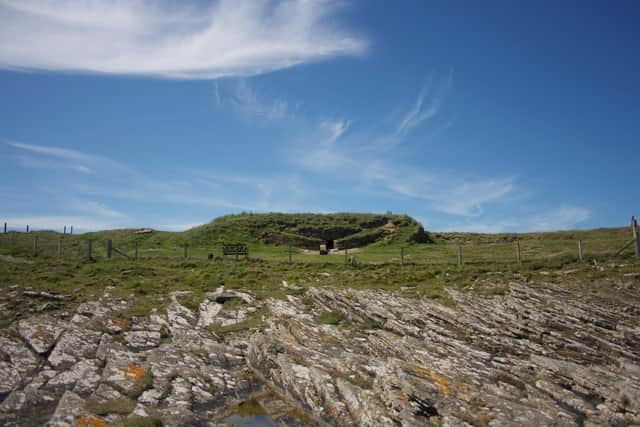Tomb of the Eagles: Future of celebrated ancient burial site on Orkney in doubt after closure
Now, the future of Neolithic burial site The Tomb of the Eagles at Isbister, South Ronaldsay, is in doubt after the family who run the visitor centre announced it would close permanently due to both personal reasons and the impact of Covid-19.
Tomb of the Eagles was discovered in 1958 by farmer Ronnie Simison, who later excavated the site and opened up a house to display some of the contents of the tomb, which served as a place to lay the dead from around 3000BC.
Advertisement
Hide AdAdvertisement
Hide AdThe bones and talons of several sea eagles were also later deposited.


The site has long-been a popular tourist attraction, where visitors have unusually been able to handle a number of artefacts from the tomb.
Meanwhile, a large number of finds are held by Orkney Museum in Kirkwall and have become the basis of much research into the Neolithic period in Orkney.
A number of skulls were found to have been injured by blunt force, perhaps with a mace or axe, with evidence of deformity and disease also discovered.
A spokesman for Orkney Archaeology Society said the closure was “very sad” news.
A statement said: “It is a fabulous site and one that is very important to Orcadians and to the story of our history.
"We have been in touch with the family to pass on our best wishes. We know this won’t have been an easy decision for them to make.”
The visitor centre was run by the daughters of Mr Simison – sisters Kathleen MacLeod, 60, and Freda Norquay, 59 – with the costs associated with re-opening the site post-Covid partly leading to the decision for them to close the attraction.
Advertisement
Hide AdAdvertisement
Hide AdThe visitor centre was set up by their father, with Orkney Isles Council later becoming the custodians of the the tomb and a neighbouring Bronze Age site, it is understood.
The family are saddened by the decision to close the visitor centre, but believe the time is right for them to end their involvement with the site.
Dr Alison Sheridan, former long-standing principal curator of early prehistory at National Museums Scotland, said arrangements should be made as soon as possible for the remaining artefacts to be moved to Orkney Museum.
She said: “The chamber tomb at Isbister is of crucial importance to our understanding of Orkney’s Neolithic inhabitants and it is imperative that the finds be removed to join the rest of the assemblage in Orkney Museum as soon as possible for professional curation and to enable future research.
"The monument is of particular interest for the remains of white-tailed sea eagle that were buried inside it. I was responsible for getting two of these bones radiocarbon-dated and it’s clear that the eagle remains were placed in the tomb several centuries after it was built.
"Care will also have to be taken with managing visitor access to the monument, to avoid damage through excessive numbers of visitors.”
A spokesman for Orkney Isles Council said: “The family have been in contact with us and we plan to discuss this further with them.”
A message from the Editor:
Thank you for reading this article. We're more reliant on your support than ever as the shift in consumer habits brought about by Coronavirus impacts our advertisers.
If you haven't already, please consider supporting our trusted, fact-checked journalism by taking out a digital subscription.
Comments
Want to join the conversation? Please or to comment on this article.
